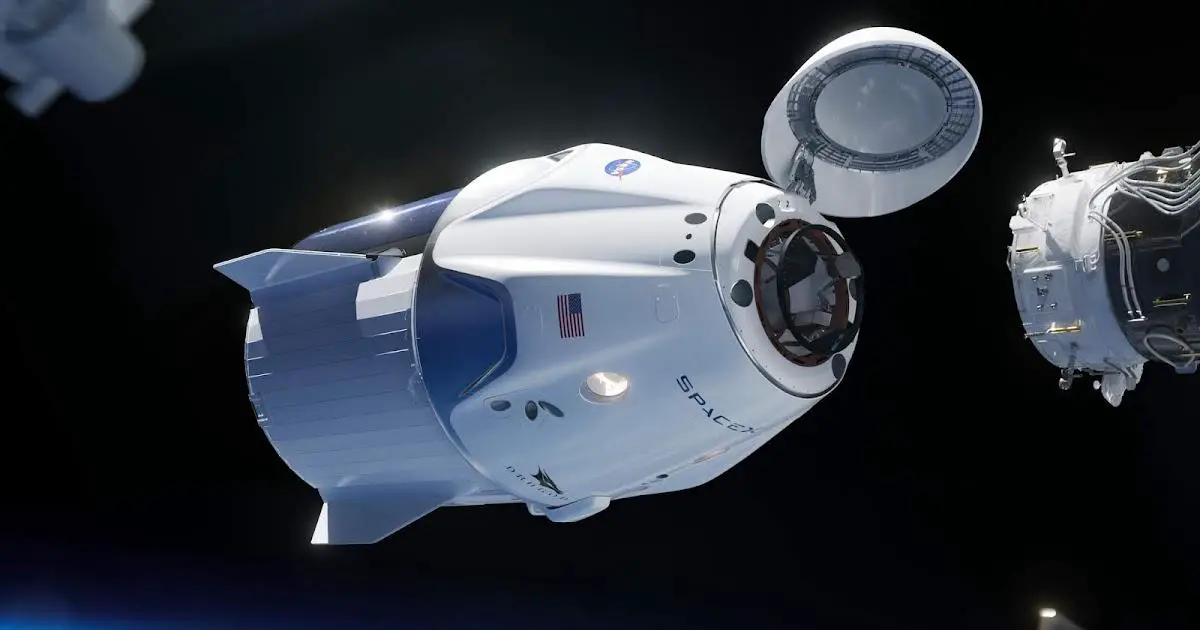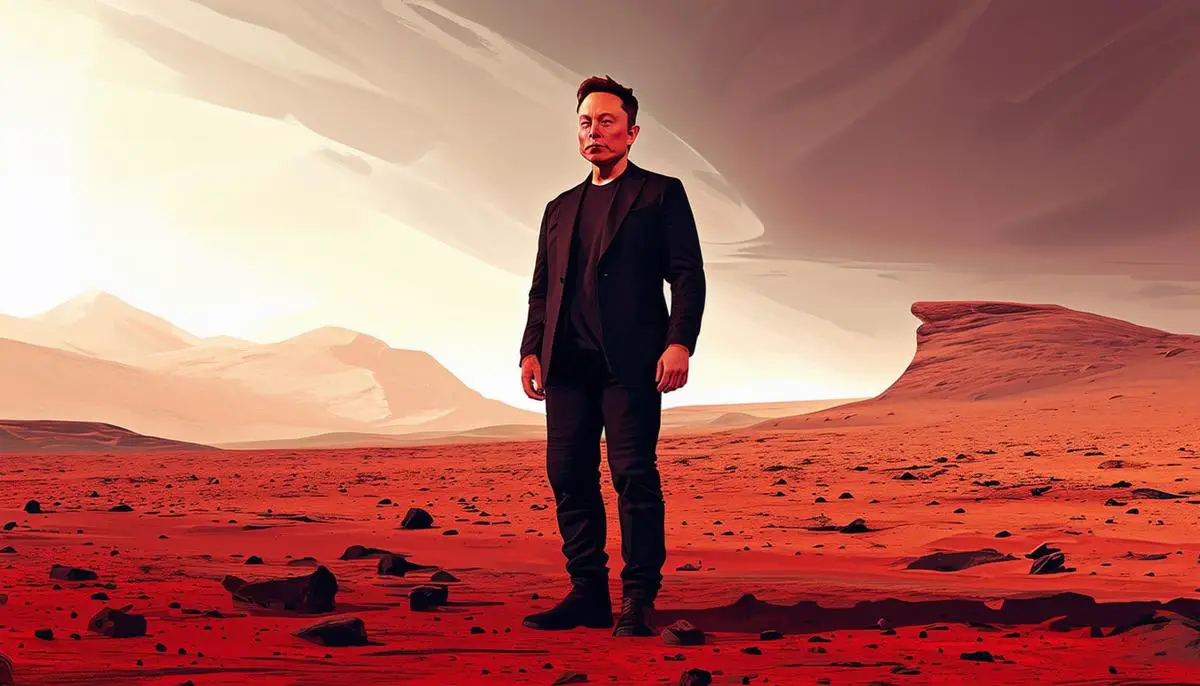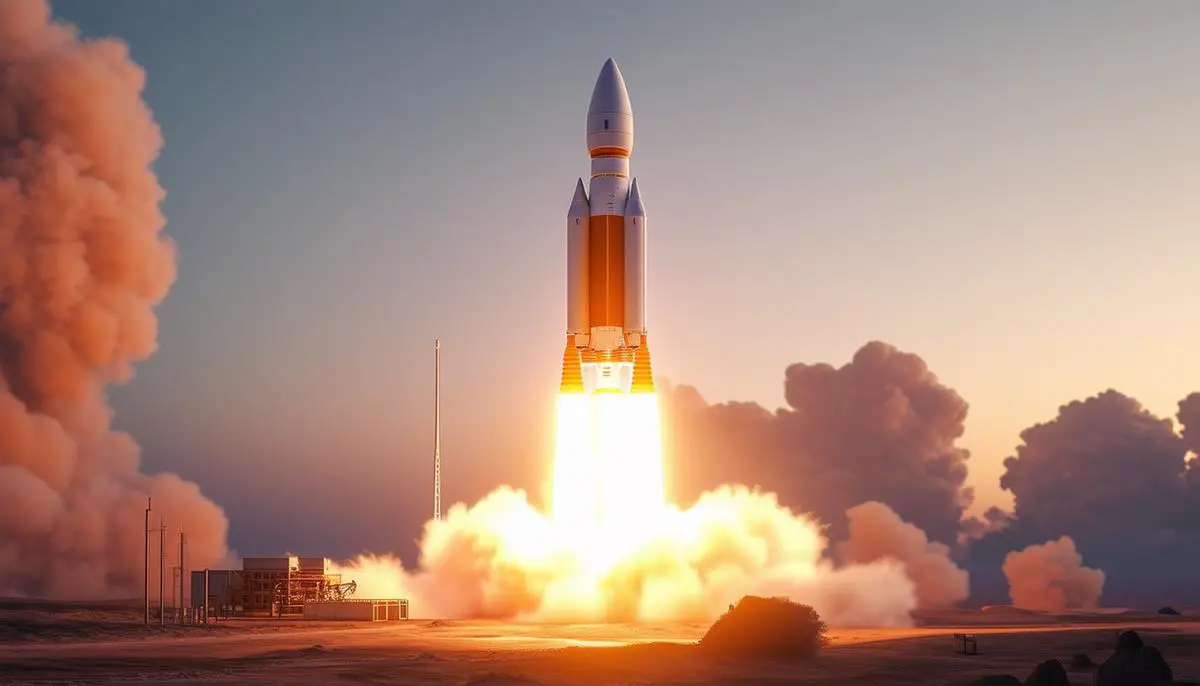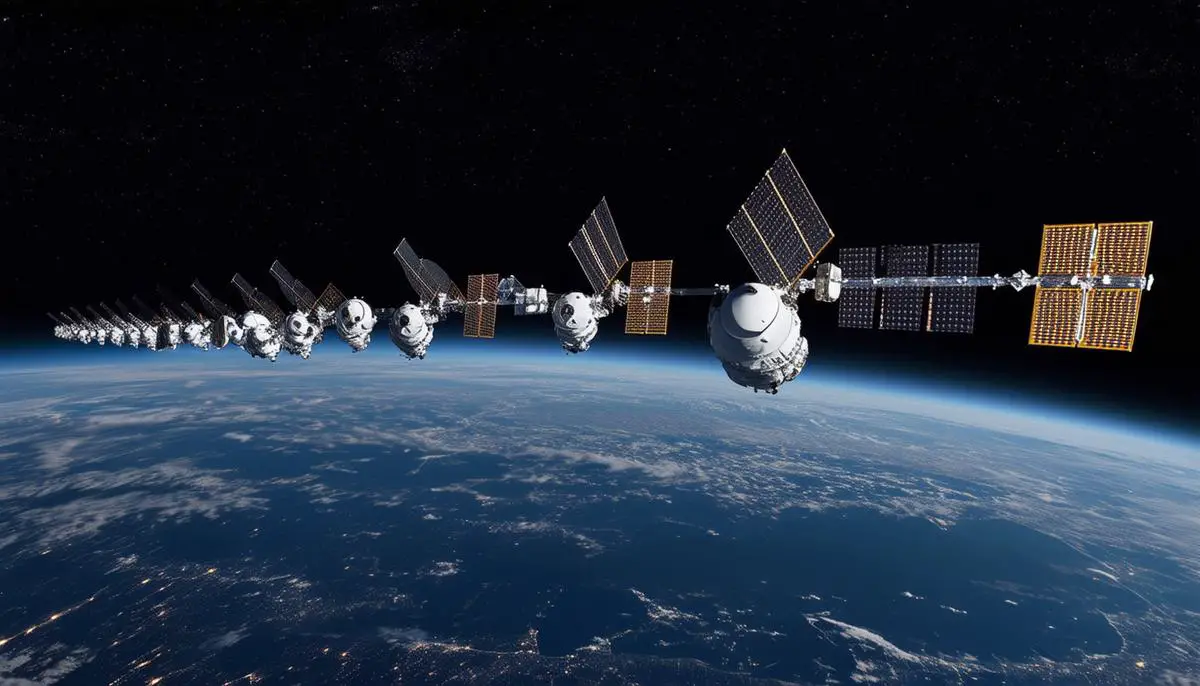SpaceX's Evolution and Milestones
SpaceX, founded on March 14, 2002, by Elon Musk, has embarked on an ambitious journey to revolutionize space technology. The company's first major milestone was the Falcon 1, the first privately developed liquid-fueled rocket to reach orbit in 2008. This laid the groundwork for further advancements in rocket technology.
The Falcon 9, SpaceX's flagship launcher, made its debut in 2010. The company has since improved and recycled Falcon 9 boosters multiple times, reducing costs per launch and reshaping the economics of spaceflight. This disruptive pricing and reusability has eased the financial burden on space travel and payload deployment into orbit.
The Dragon spacecraft made headlines in 2012 as the first commercial vehicle to attach to the International Space Station, signaling a move toward the commercial sector's involvement in global space agendas traditionally led by national agencies like NASA.
SpaceX's Starship project aims to develop a fully reusable spacecraft for eventual Mars colonization. The Starship SN15 achieved its first successful landing in May 2021 after several trials, demonstrating progress towards this goal.
Parallel to Starship, SpaceX's Starlink satellite internet service began altering global internet access landscapes. These low-orbit satellites aim to provide high-speed internet across the planet, with launches boosting the operational constellation since 2019.
Key collaborations, such as with NASA for the Crew Dragon missions, have allowed SpaceX to test new technologies and cement its reputation as a reliable partner capable of fulfilling government-level spaceflight missions.
SpaceX's influence has also impacted the cultural zeitgeist, linking Musk's public persona with the company's technological achievements and fostering a global fascination with space.
As SpaceX continues to push the boundaries of space exploration, it is redefining what is possible and expanding our horizons in the cosmos.

Elon Musk's Vision for Mars
Elon Musk's audacious dream of colonizing Mars moves closer to reality with each advancement of SpaceX's Starship, designed as a fully reusable rocket capable of carrying up to 100 people to the Red Planet. The Starship system is intended to service Earth orbit missions and voyage to Mars.
Musk envisions the process of Mars colonization unfolding through several stages:
- Establish essential life support infrastructures, including water and power generators
- Fabricate propellant plants using Mars' resources, such as carbon dioxide and water ice
- Facilitate frequent and economically viable flights to Mars using Starship
Creating a self-sustaining city on Mars poses significant challenges:
- Long-duration spaceflight
- Life support in an alien environment
- Creation of habitable spaces amidst cold temperatures and higher radiation levels
Starship's capacity for substantial payloads and the possible acceleration of interplanetary throughput are crucial to addressing these challenges.
Musk's ambitious timelines, initially aiming for Mars cargo flights as early as the mid-2020s and potential human missions within a decade, have sparked both excitement and skepticism in the aerospace community. Each phase of this interplanetary endeavor is dependent on engineering success, SpaceX's evolving funding schemes, public-private partnerships, international treaties, and the ability to overcome technical setbacks.
As SpaceX works towards this multiplanetary future, the challenges underscore the mission's multifaceted nature, interlacing cutting-edge technology with economically and ethically loaded decisions. Success hinges on technological advancements and the fortitude to learn from failures, a practice that SpaceX has embraced under Musk's leadership.
The journey towards Mars represents a significant shift in how humanity views its place in the cosmos, with the potential to become not just explorers but also settlers on other worlds. SpaceX's unwavering optimism and technological prowess are driving this narrative of innovation and ambitious space exploration.

Impact of SpaceX Innovations on Space Industry
SpaceX has engendered a paradigm shift in the contemporary space industry, reflecting a fundamental change in space travel economics and global strategic impetus. The company's pursuit of reusable rocket technology under Elon Musk's stewardship has catalyzed a reduction in space flight costs, democratizing access to space. This transformative approach has enabled multiple payloads to be shuttled to orbit within the financial grasp of smaller nations and private enterprises, previously restricted to wealthier global powers.
The Falcon 9's reusability standard has compelled competitor entities and global space agencies to reevaluate and iterate their launch strategies. This influence has triggered an evolutionary rush, prompting entities like Russia's Roscosmos and China's CNSA to accelerate their development timelines for reusable launch systems. Private companies such as Blue Origin and Relativity Space are also aligning competitively with SpaceX's low-cost rocket blueprint, expediting advancements in technologies like 3D printing of rocket components and autonomous precision landing.
SpaceX's impact extends beyond rocketry to broader ecosystems affecting other industries. The Starlink satellite constellation has drastically shifted satellite deployment strategies, fostering cost-effective global connectivity and framing new regulatory discussions about space traffic and debris management.
The Starship project further emphasizes these shifts, with global agencies like NASA and the European Space Agency (ESA) recalibrating their focus towards cooperative, comprehensive missions to outer space. These agencies increasingly leverage SpaceX's competitive pricing and rapid innovation cycles to accelerate their deep space exploration and human spaceflight agendas.
SpaceX has also influenced cultural shifts, with its emphasis on commercial viability and Mars colonization aspirations permeating public and political discourse. This renewed enthusiasm for space is apparent in education, entertainment, and policy propulsion toward STEM fields, fostering broader public engagement.
In summary, SpaceX's conquest over traditional spaceflight barriers has spurred an exponential expansion in the industry's frontiers. The company's recalibration from risk-laden cost structures towards scalable and sustainable growth serves as both a blueprint and a beacon, urging an industry-wide march forward with significant momentum.

Challenges and Controversies
As SpaceX propels forward, its galactic ambitions are offset by terrestrial challenges. Technically, the company has grappled with production bottlenecks, such as the Raptor engine production noted by Musk.1 Delays or issues with this essential component can directly interfere with the ambitious timelines set for Moon and Mars voyages.
Politically, SpaceX finds itself pursuing congressional favor for contracts while navigating global space race politics. The exclusive contract to leverage Starship for NASA's Artemis missions drew legal challenges from competitors like Blue Origin, showcasing the spirited competition within the space sector that often spills into governmental lobbies and the judiciary.
Socially, Elon Musk's omnipresence and occasional controversial statements or actions have sometimes swayed public sentiment and raised concerns about SpaceX's public image. For instance, his recreational marijuana use during a recorded broadcast resulted in a NASA safety review, potentially jeopardizing the perception of SpaceX's institutional seriousness.2
Internally, SpaceX has experienced leadership and strategic fit challenges, with reported volatility in decision-making and management style affecting corporate execution and retention.
The ambitious Starlink project has also faced scrutiny, with astronomers worldwide expressing concern about the satellites' brightness and number potentially obstructing celestial observations and contributing to orbital clutter.3
Despite these challenges, SpaceX has demonstrated a resilience and determination to overcome obstacles and learn from setbacks. The company's pioneering spirit and drive to push the boundaries of space exploration continue to propel it forward, even in the face of technical, political, and social hurdles.
As SpaceX navigates these challenges, it is clear that the path to revolutionizing space travel and achieving its ambitious goals is not without its difficulties. However, the company's ability to adapt, innovate, and persevere in the face of adversity has been a hallmark of its journey thus far, and will likely continue to shape its future endeavors in the space industry.

Future Projects and Collaborations
SpaceX's vision extends to expansive projects and collaborations that promise to shape the future of space exploration. As a pivotal collaborator in NASA's Artemis program, which aims to return humans to the moon and establish sustainable lunar exploration by 2024, SpaceX's Starship system has been selected to transport astronauts from lunar orbit to the moon's surface. This partnership represents a substantial stride towards developing the architectures necessary for long-term human habitation on Mars, a central goal of Elon Musk's vision.
Alongside its traditional aerospace endeavors, SpaceX is also focused on expanding its Starlink internet constellation. With approvals for up to 30,000 satellites, the company is poised to significantly increase global high-speed internet coverage. This initiative has the potential to bridge digital divides and provide low-latency connectivity to remote areas, financial centers, and beyond, offering a tangible interface between space-based projects and terrestrial applications.
SpaceX is also exploring cooperative engagements with emerging high-tech sectors and academia. These collaborations, which may involve fields such as quantum computing and artificial intelligence, could contribute to the development of advanced celestial navigation technologies and foster mutual growth across astronomical and terrestrial domains.
New partnerships with international space agencies are also on the horizon, focusing on various elements of Mars-bound missions, from habitat construction to innovative propulsion systems. These collaborations can augment SpaceX's understanding of evolutionary trajectories and provide the detailed granularity required for successful interplanetary human exploration.
Commercial lunar payload services represent another area of potential growth, with SpaceX's Starship poised to transport diverse payloads on translunar missions, lunar surface operations, and back to Earth. Such mutually beneficial arrangements can help SpaceX refine its technical, logistical, and economic capabilities while setting new benchmarks in the space industry.
Each foray into new partnerships and projects underscores SpaceX's commitment to shaping the future of space exploration and sparking transformative changes across the sector. As the company continues to push the boundaries of what is possible, it is clear that its impact will extend far beyond the realm of space travel, influencing technological advancement, international collaboration, and the collective human journey to the stars.
In conclusion, SpaceX's wide-ranging projects and forward-looking collaborations paint a compelling picture of the company's role in defining the future of space exploration. By balancing its own ambitious goals with strategic partnerships and a commitment to innovation, SpaceX is well-positioned to continue driving the space industry forward and inspiring humanity's ongoing quest to explore the cosmos.
The most pivotal aspect of SpaceX's journey is its revolutionary approach to reusable rocket technology, which has significantly democratized space access. This paradigm shift is not only a technical achievement but also a strategic maneuver that continues to influence global space exploration and satellite deployment, marking a new era in the aerospace industry.
- Sheetz M. Elon Musk says SpaceX's Starship rocket faces 'genuine risk of bankruptcy' unless it flies regularly. CNBC. November 30, 2021.
- Harwood W. NASA to launch safety review of SpaceX and Boeing after video of Elon Musk smoking pot rankled agency leaders. CBS News. November 20, 2018.
- Witze A. How satellite 'megaconstellations' will photobomb astronomy images. Nature. August 26, 2020.
![]()